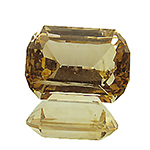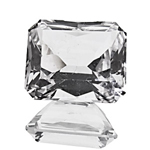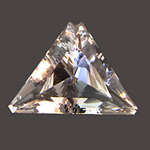Danburite
Relatively rare mineral of the silicate and germanate class.

Yellow danburite from the USA


Colourless danburites from Mexico
Danburite is hard and well suited for jewellery. However, due to it's rareness and the rather unexciting colour, it is hardly ever used.
Origin of name: named after the type locality Danbury, in Fairfield County, Connecticut, USA, by American mineralogist Charles Upham Shepard in 1839.
Synonyms and trade names: none
Can be confused with: most other colourless and yelloiwsh gems
Localities: mindat.org currenlty (2014) lists 149 deposits. Facetable danburite is rather rare. Deposits of gem quality danburite are found in Mexico, the USA, Russia, Burma, Sri Lanka and Madagascar.
Handling: danburite is hard and sports only poor cleavage. However, due to it's low melting point, danburite is very heat-sensitiv. Facet edges melt easily, so keep away from the blowpipe! Besides, danburite is rather brittle and susceptible to fluoric acid.
Worth knowing: danburite phosphoresces red under the blowpipe and melts to a glassy, translucent pearl. In contact with borax it effervesces.
Source: Wikipedia
 Deutsch
Deutsch